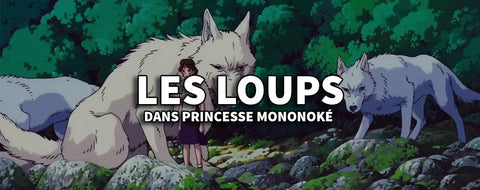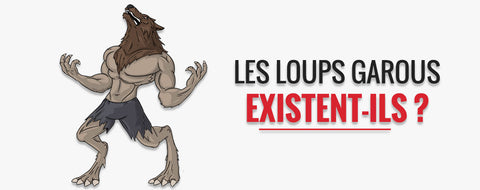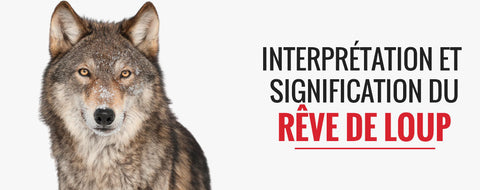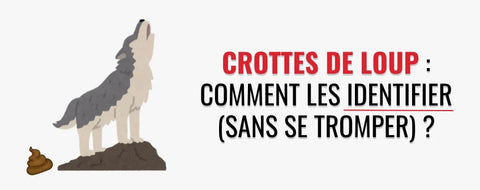
Fenrir Wolf: A Powerful Symbol of Norse Mythology
of reading - words
In Norse mythology , the wolf Fenrir represents the most brutal and infamous monstrous creature. He was born from a union between the god Loki and the giantess Angrboda. He is the brother of Jörmungand, the Midgard Serpent, and Hel, the queen of the underworld.
This mythological animal marked this myth with its violence and greed for blood. It was even unfaithful to the gods who cared for it.
In this article, we will follow the circumstances of the horrors committed by this mythical monster.

Insight into the Nordic Cosmos
The Aesir represent the tribe of Norse gods , such as: Odin, Heimdall, Thor, Frigg, Loki, Blader, Bragi, and Idhunn. They generally symbolize the powers of nature. They founded their kingdom at the center of the world, called Asgard.
Asgard was built in the highest level of the nine worlds of the Nordic cosmos. This cosmos is governed by the tree of life: Yggdrasil, which divided the universe into three levels:
- The upper level : where the gods are.
- The central level : where the dwarves, giants and men are located.
- The lower level : where the dead are.

Fenrir Wolf: A Little History
The wolf Fenrir was a Norse legend of fury and aggression, which so terrorized the Scandinavians. The Aesir took charge of his upbringing, in order to oversee his development and prevent him from committing disasters.
Fenrir was growing in a rapid and surprising way, which prompted the Aesir to decide to chain him up , in order to protect Asgard from his relentless pursuit.
Given his prodigious power , no one could approach him. To do this, they made him believe that they were going to test the potential of his strength by binding him with chains.
The Aesir attempted the game several times. On the first attempt, the gods burdened him with a very strong chain, which they named "Loeding." But, thanks to his immense strength, this legendary animal managed to break it easily.
For the second attempt, the Aesir chained him with a stronger chain, which they called "Dromi." Like his predecessor, this giant wolf managed to break it without difficulty, thanks to his extraordinary strength.
For the third attempt, they changed their strategy to trap this monster. To do this, they forged the chain further to make it stronger and named it "Gleipnir," while retaining the appearance of a flexible, soft-touch ribbon.

Fenrir became more suspicious and accepted the challenge on the condition that one of the gods put their hand in his mouth to prove their good faith. Tyr ( the god of the sky, justice, victory ) took the initiative to put his right arm in his mouth.
The monstrous creature made every effort to break the chain, but to no avail. On the contrary, the bond grew tighter and tighter as it tried. It finally bit Tyr's arm when the Aesir refused to free him.
To prevent his aggressive bites, the gods thrust a sword into Fenrir's mouth, causing his saliva to flow out. According to myth , this saliva was the source of the rivers Van (hope) and Vil (will). Fenrir remained overwhelmed until the Battle of Ragnarök , where he managed to break the chains.
The mating of this titan with the giantess Larnvidia gave birth to the two wolves Hati and Skoll.
The Battle of Ragnarök
In Norse mythology, the Vikings predicted the arrival of a day that would mark the end of the world and the disappearance of the gods and goddesses. This symbolic day corresponded to the final battle between the gods and the Titans, the events of which took place on the plains of Vigrid .
The Battle of Ragnarök was littered with very harsh events, such as:
- The devastation of the plains by waves of poison sprayed by Jörmungand: the Midgard Serpent and brother of Fenrir .
- The ruin and massacres committed by the giant Fenrir, who, after his emancipation from the bonds that bound him, spared no effort to devour everything in his path. He even killed the god Odin . This deity was a symbolic god in Norse legend and the fundamental member of the Aesir. The etymology of his name evokes fury, wit and poetry. He was the god of the dead, knowledge, victory, magic, hunting and war.
- The devouring of the moon and the sun by the Sköll and Hati wolves (the offspring of Fenrir).
Fenrir's intense hatred of the gods culminated in the ruin of Asgard . He was the true terror of the Aesir.
For more information on the Fenrir Wolf, watch the video below:
To satisfy your interest in the Norse myth and its famous hero Fenrir, we offer you a collection of interesting wolf objects: Nordic style wolf pendant, Viking wolf keychain, Fenrir wolf t-shirt, etc. The choice is yours!





leonie
ca ma aides pour mon expo
leonie
ca ma aides pour mon expo
leonie
ca ma aides pour mon expo
leonie
ca ma aides pour mon expo
leonie
ca ma aides pour mon expo